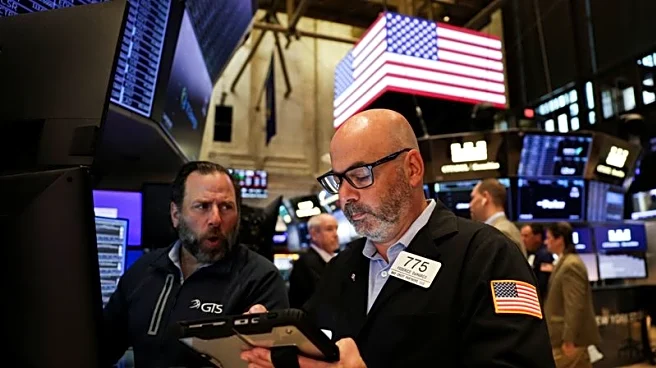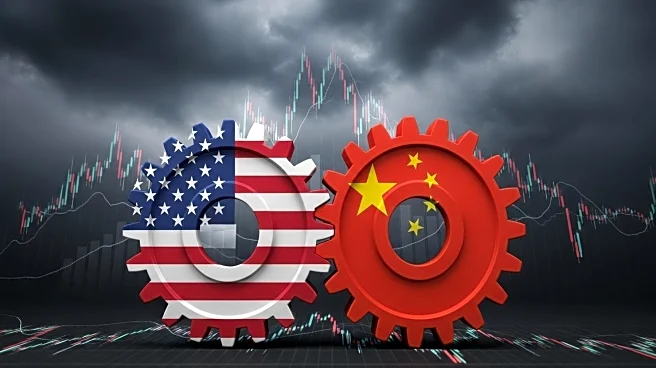What's Happening?
LVMH, the world's largest luxury conglomerate, is experiencing significant pressure on its profit margins due to the doubling of gold prices over the past two years, compounded by U.S. tariffs and a weaker dollar. These factors have made it challenging for high-end jewelry and watch brands, including LVMH's Tiffany and Bulgari, to maintain their profit margins. Gold prices have surged above $4,000 an ounce, driven by investor concerns over economic and geopolitical uncertainties and expectations of further U.S. interest rate cuts. As a result, LVMH is expected to report flat third-quarter sales, with a decline in fashion and leather goods and slight growth in watches and jewelry. Analysts suggest that brands may need to implement gradual price hikes to offset these pressures.
Why It's Important?
The rising gold prices and economic factors affecting LVMH highlight broader challenges in the luxury goods industry. As gold represents a small share of input costs for luxury jewelry brands, even modest retail price increases could address material gold price hikes. However, brands must be cautious in passing these costs to consumers to avoid diminishing demand. This situation underscores the vulnerability of luxury brands to external economic factors, which can impact their profitability and strategic pricing decisions. The pressure on LVMH's margins may lead to changes in pricing strategies across the industry, affecting consumer behavior and potentially altering market dynamics.
What's Next?
LVMH and other luxury brands are likely to consider strategic price adjustments to manage margin pressures while maintaining consumer demand. Analysts suggest that brands will need to be cautious in implementing price hikes to avoid eroding demand. The ongoing economic uncertainties and geopolitical tensions may continue to influence gold prices and currency rates, further impacting the luxury goods sector. Stakeholders in the industry will be closely monitoring these developments to adapt their strategies accordingly.
Beyond the Headlines
The situation with LVMH reflects broader economic challenges that luxury brands face in maintaining profitability amidst fluctuating commodity prices and currency rates. The need for cautious pricing strategies highlights the delicate balance between cost management and consumer demand in the luxury sector. This scenario may prompt brands to explore alternative strategies, such as diversifying their product offerings or enhancing value propositions to sustain market competitiveness.











